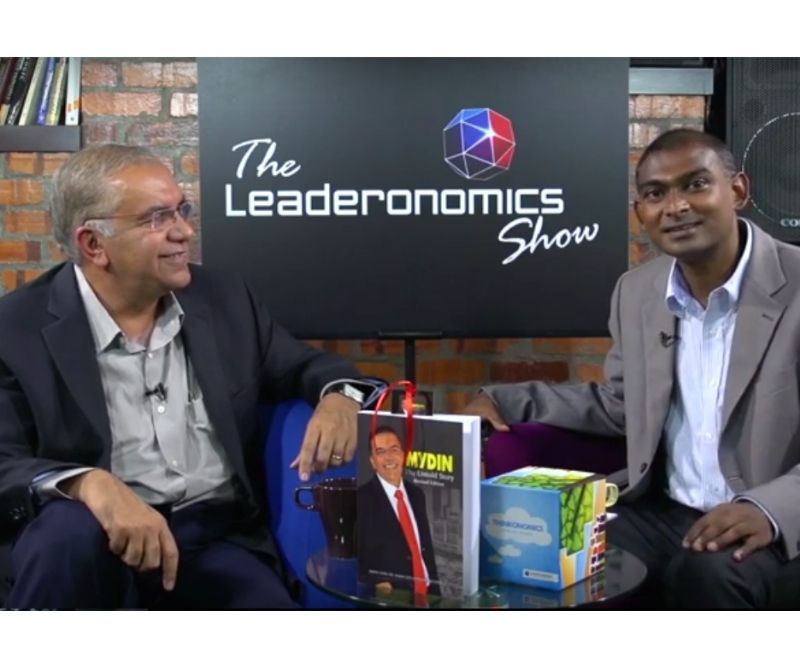It’s Not Just About KPIs: Why Leaders Need To Be More Hands-On

This approach could serve an organisation better than semi-annual reviews
“He shouldn’t get so involved in the details of the business,” moaned a senior manager – one of a dozen or so people in my Results Leader Programme for senior executives, “We should be left alone to do the work we were hired to do.”
“You’re right!” another director agreed. “It’s very distracting when [the owner] keeps giving us lists of what to focus on. So often he’s involved in the tiniest details, like the bins being out of place or the fact that the planters were moved.”
The conversation was taking a nosedive into blaming the owner for lack of performance.
A different perspective
Another senior director of the company had a different view, “Guys, you’re right, we should be upset, but not because he’s getting involved in the details. We should be upset that what he’s finding, we should have found and corrected [ourselves].”
He made a good point. Every time I hear complaints of a leader getting involved in the details and discovering less-than-desired performance, I can’t help but think, “But you’ve invited him in by your lacking performance.”
If an employee isn’t doing what he should and the leader doesn’t get involved, then the lack of performance will persist.
When people don’t perform, they give up their right to autonomy.
Also by Tommy Weir: Money Won’t Keep Your Employees Around
Micro-monitoring, a leader’s tactical tool
Sadly, this is why leaders need to micro-monitor. Micro-monitoring isn’t a desire to interfere; it’s a tactic to make sure people are delivering. It’s a proven way to prod your employees to deliver according to the plan.
Obviously, you can’t know everything that’s going on inside your business, but you must make sure everyone else is obsessed with the details. It is your responsibility to walk the shop floor so you can help people succeed.
Wal-Mart founder, Sam Walton, famously described his management style as “management by walking and flying around.”
Others at Wal-Mart described it as “management by looking over your shoulder”. I’m sure they didn’t mean this as a compliment, but it begs the question, would Wal-Mart have become a success without it? The answer is no!
Wal-Mart enjoys a 20-year average return on equity of 33%, average sales growth of 35%, and incredible sales per square foot – 50% better than the industry norm.
According to Walton, “You’ve got to give folks responsibility, you’ve got to trust them, and then you’ve got to check up on them.”
Reactive vs Proactive Leadership
When leaders have the mindset of making sure their teams succeed, then monitoring moves from inspection, which invokes resistance, to proactively ensuring success.
Any boss can set annual key performance indicators and then try to rely on twice-per-year performance reviews as a means to deliver them, but this is simply insufficient when it comes to monitoring for future success. Reactive, after-the-fact performance reviews are the antithesis of hands-on, proactive leadership.
Effective monitoring happens in real time. It is more, much more, than a formal twice-a-year or once-a-quarter process.
The case of Majid
Majid Al Futtaim, owner and operator of more than a dozen malls, including the Mall of the Emirates, walks his malls every single week. Surely, the owner of a multi-billion-dollar business could justifiably kick his feet up on his desk and admire the view from his penthouse office.
But, Majid is hungry to see the “shopping bag” test first-hand: How many bags are people carrying in their hands? Are they full? More this week than last week? What types of goods are people buying? This simple manual test is an economic indicator for how well the stores are turning over their inventory.
Some would argue that walking the malls every week is really just too much for an owner, but this is how he keeps his finger on the pulse of his business. This way, he is able notice things that are out of place and redirect his employees’ focus.
Get your hands dirty!
Get out of your office, watch what’s happening in your business. Your employees need you to be hands-on so you can keep them and the business focus.
It’s your responsibility to make sure everyone is actually doing what’s expected. When you know what they’re doing, you can help them succeed.
Tommy is a CEO coach, author, speaker and advisor who believes in helping good leaders become great! To engage with him, email us at editor@leaderonomics.com.
Reposted with permission.
Leadership
This article is published by the editors of Leaderonomics.com with the consent of the guest author.






